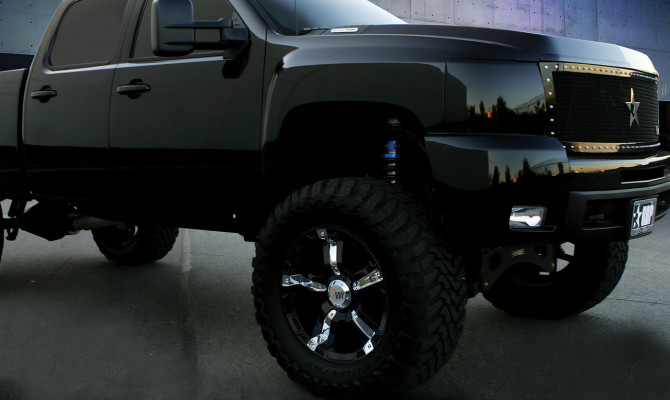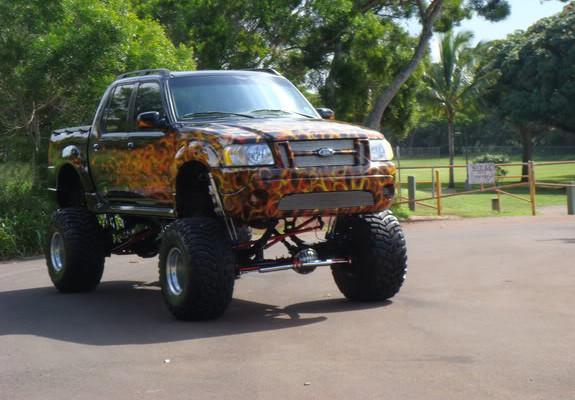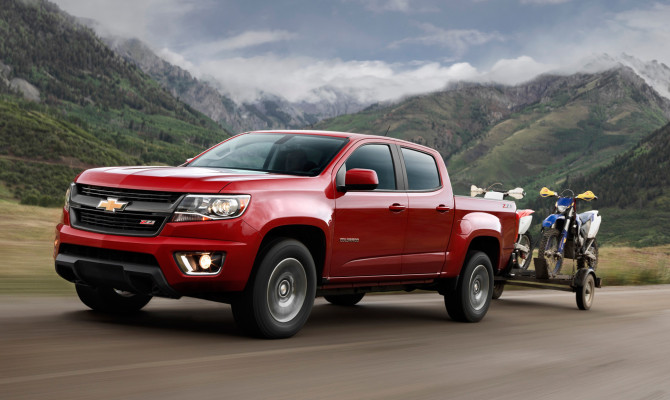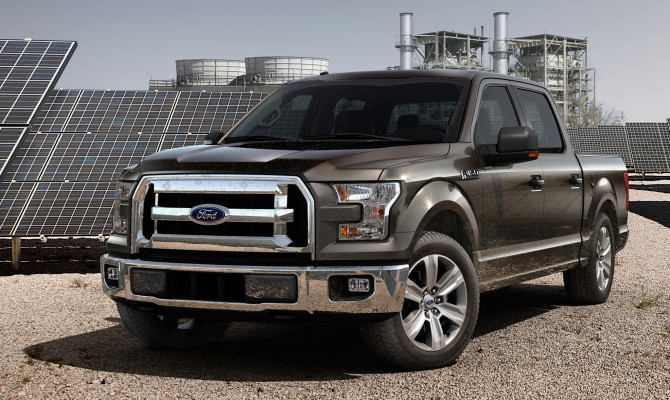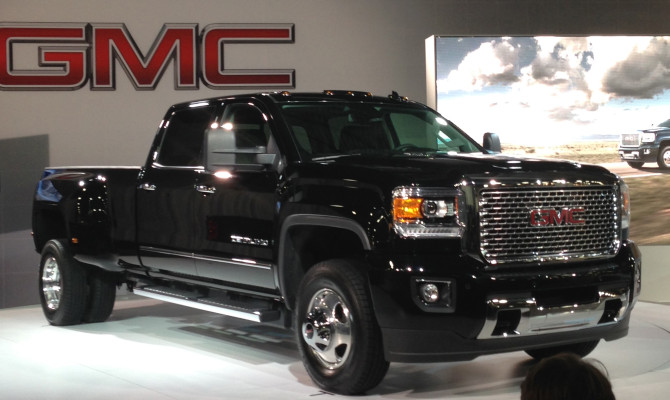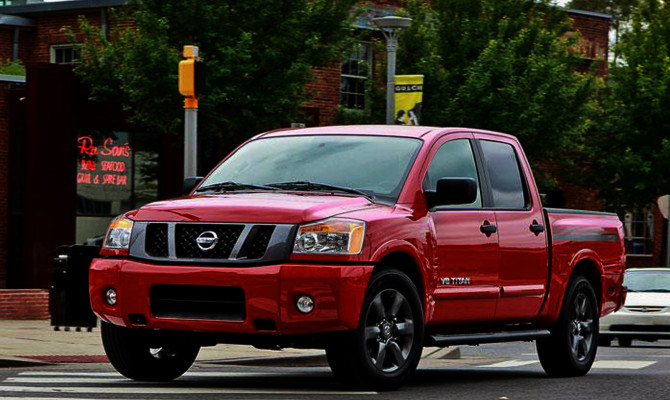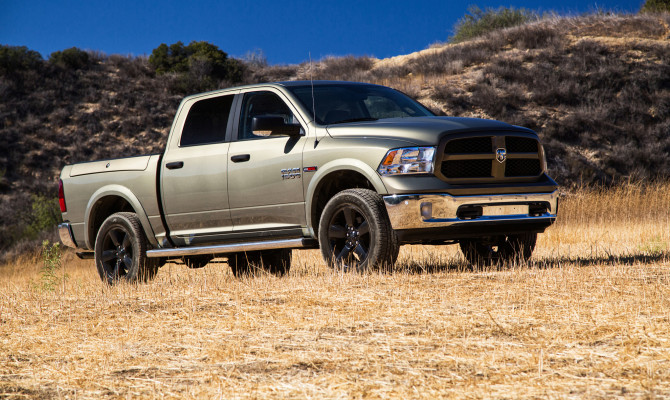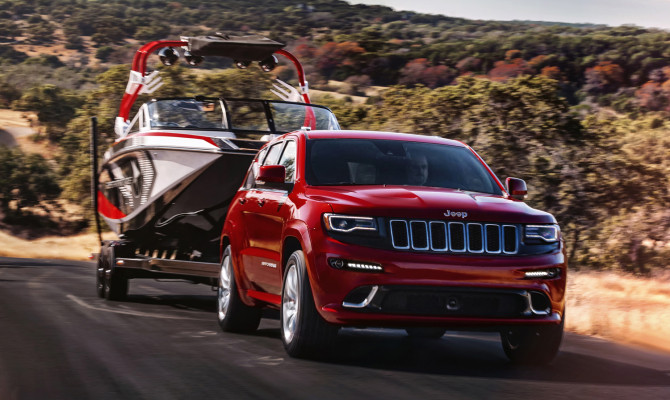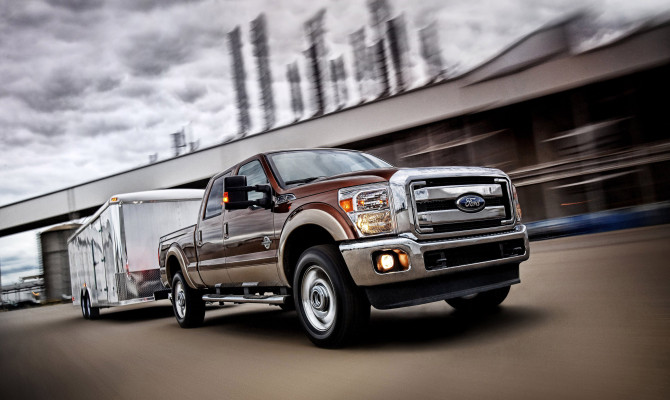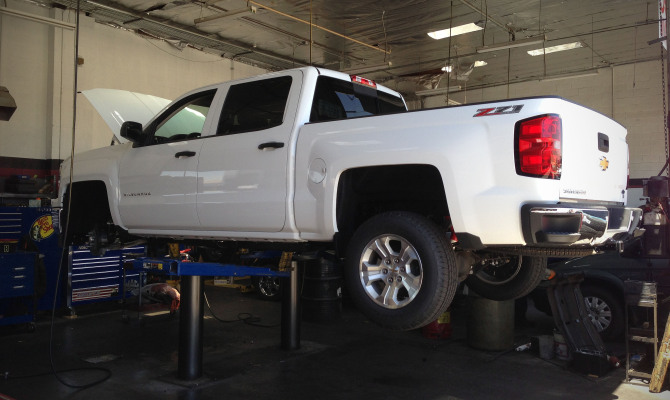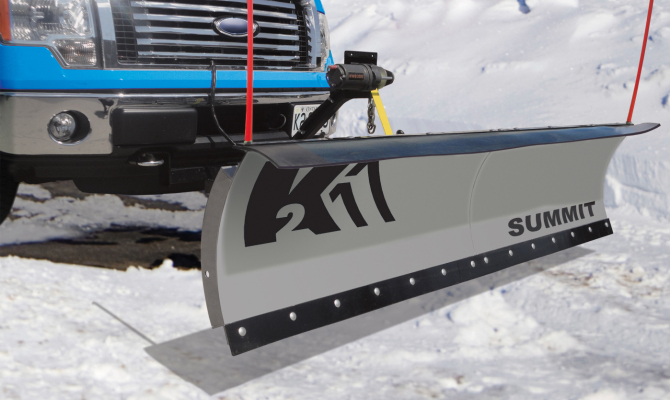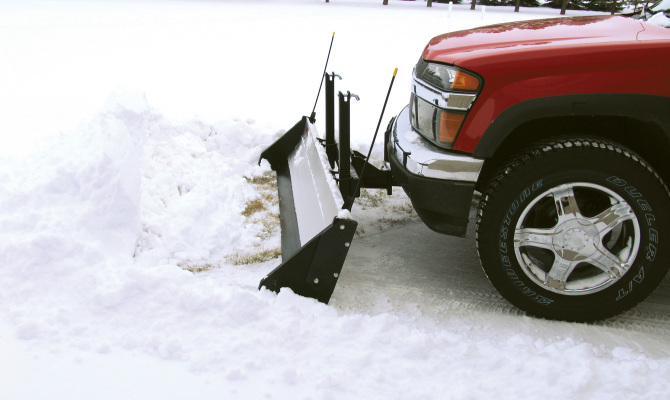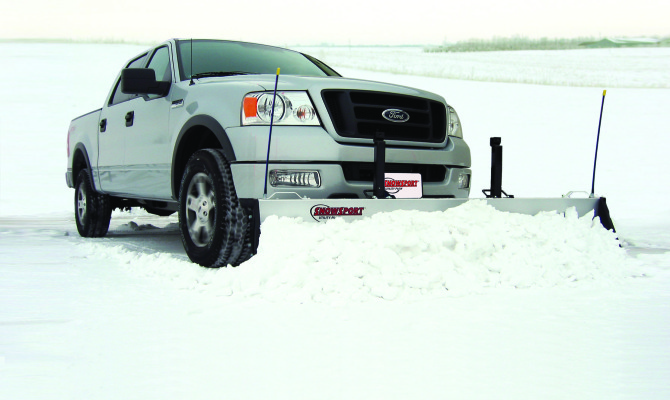The Promaster seeks to compete against Ford’s Transit series, Nissan’s growing line of commercial vans, and its old friend Sprinter, now from Mercedes) in the expanding segment.
Putting a heavy duty pickup truck through its paces
“The all-new body features military grade, aluminum alloy sitting on a high strength steel frame…”
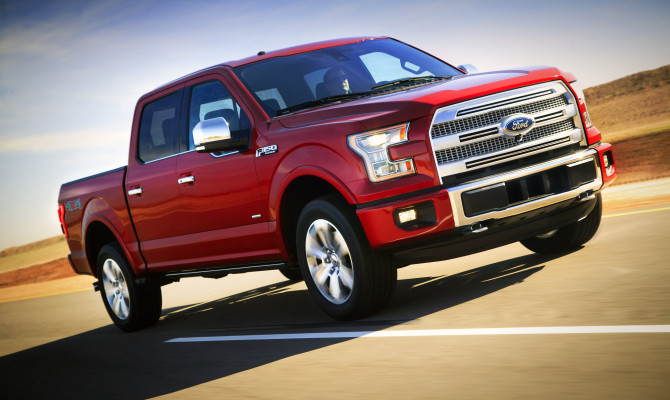
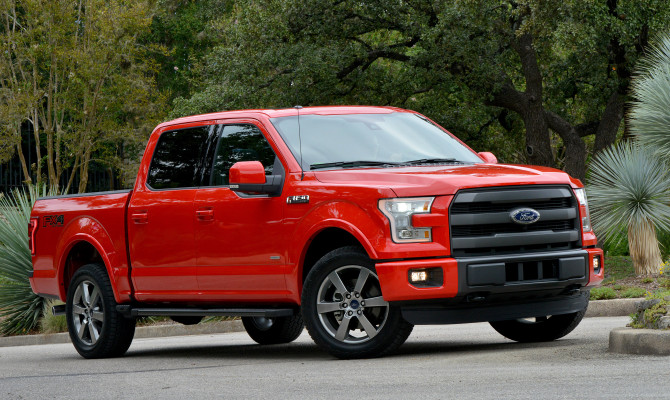
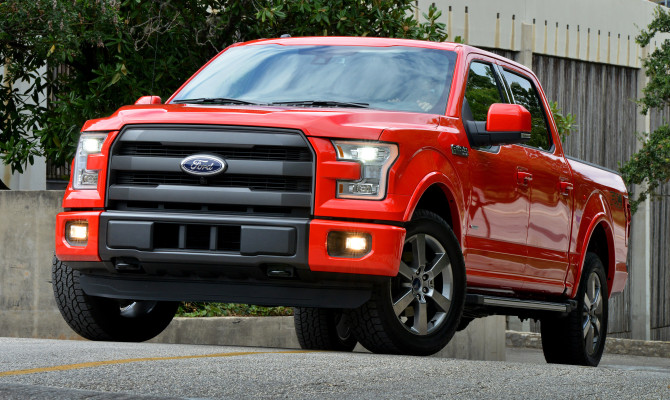
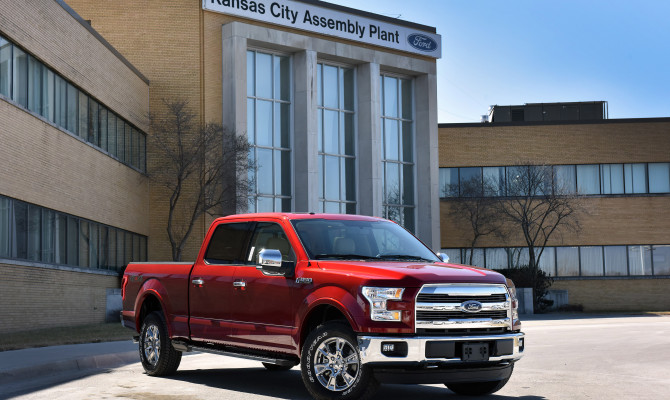
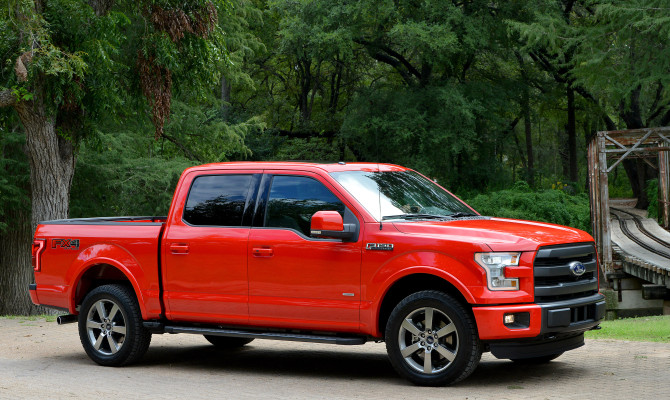
Ford is entering a brave new world with its extensive use of aluminum in its brand new F150.
It remains to be seen how many of its competitors will leap on the aluminum bandwagon but one thing for sure is this move will shake up the light-duty truck world.
Looks:
The all-new truck features smooth body lines with oversized fender flares, sleek headlights form part of the large oversized grille, with a blended in front bumper. These features truly stand out when you see this new F150 driving down the road and clearly differentiate it from the rivals. It’s very similar to the Atlas concept vehicle that was first shown a couple of years ago though it has been toned down a little in this latest version of the best-selling pickup in Canada.
The all-new body features military grade, aluminum alloy sitting on a high strength steel frame. The intent here is to create less overall weight without sacrificing strength. However, it is a bold move that may come back to haunt Ford. Real world driving of this vehicle will produce all kinds of scenarios. What happens when you need to fix the body panels, does the cost escalate to the point it is easier to write it off rather than repair? How will it hold up against constant towing or off-road use?
Time will tell, but you have to figure Ford has done some homework before unleashing the beast.
In The Cab:
It’s a spacious cab with a little more door width than the last version. You’ve got to like the 10-position adjustable driver’s seat, which is heated and ventilated. You won’t want to get out once you have arrived at the work site!
The Supercab and Supercrew models offer a fully flat floor providing ample cargo space. The beltline of the doors has been lowered a little and the front pillars are moved forward giving exceptional visibility. An available 8-inch LCD productivity screen on the instrument cluster can be set up to provide information tailored to your needs. Fuel consumption, towing, off-road applications offer precise information while driving. There is an optional 400-watt power inverter to can power your 110v items and, surely, that will become one hot option because of today’s workplace demands. Overall, I was impressed with the cab, very comfortable, good visibility and easy access to all the dash functions.
The panoramic roof option gives the truck a different feeling driving down the road. When the sun is shining the natural light warms the cab, it almost gives you the feeling you’re driving a convertible. I said almost.
Safety First:
Standard are front airbags with front driver and passenger seat mounted side airbags, safety canopy side curtain airbags.
Roadworthy:
My tester for the week was a SuperCrew short box version, although that sounds like an average size truck, it is not. The length of this vehicle is 6190 mm and parking in a small lot can be challenging. Backing in is your safest bet and with the use of the backup camera you are sure to get every inch of space available.
Steering is incredibly responsive and the ride is firm yet comfortable. Immediate power when you need it and plenty available to get this truck up to highway speed.
I quite enjoyed the drive and although my day was filled with errands, I still managed to relax as a drove throughout the city, only to have my bubble burst as I ran into never ending construction.
Verdict:
I found the new F150 to be slight improvement over the previous version with most of the improvements coming from the interior. The new body design is more of a personal preference and I think it will take me a while longer to come around. Give it a year and I will let you know if it was a hit or a miss.
Power:
Four engine choices here. 2.7L EcoBoost V6 with 325 horsepower and 375 lb-ft of torque, 3.5L EcoBoost V6 with 365 horsepower and 420 lb-ft torque, 3.5L Ti-VCT V6 with 282 horsepower and 253 lb-ft of torque and a 5.0L Ti-VCT V8 with 385 horsepower and 387 lb-ft
Pump frequency:
4X2
2.7L 12.2/9.2 L/100 km (city/highway)
3.5L 13.7/9.9 L/100 km (city/highway)
3.5L Ti 13.2/9.6 L/100 km (city/highway)
5.0L 15.5/10.6 L/100 km (city/highway)
4X4
2.7L 13.3/10.4 L/100 km (city/highway)
3.5L 14.2/10.4 L/100 km (city/highway)
3.5L Ti 13.9/10.5 L/100 km (city/highway)
5.0L 16.0/11.3 L/100 km (city/highway)
Warranty support:
Basic coverage: 3 year/ 60,000 km
Powertrain: 5 year/ 100,000 km
Sticker price:
XL – $24,899
XLT – $29,299
Lariat – $44,099
King Ranch – $60,499
Platinum – $62,499
“One of the more popular things to do these days is to install a suspension lift along with larger tires and wheels.”
Purchasing a new or used truck is exciting, but personalizing it is even more fun!
Believe me when I tell you, buying the truck is the cheap part. I have seen people over the years spend upwards of $25,000 or more on customization. One of the more popular things to do these days is to install a suspension lift along with larger tires and wheels. If you’re going to tackle this yourself, here are a few things you should know.
Installation: Many manufacturers offer manuals for installing lift kits but some installations are quite intricate, requiring some welding or cutting in order to add some necessary components. In this case, having a mechanic or a few knowledgeable friends around will help make the job go smoothly.
Additional Modifications: Upgrading to taller tires also means that a number of components may require part upgrades or some tuning to compensate. For instance, a truck’s engine is tuned at specific gear ratios to propel the vehicle. When adding taller tires, the gear ratios must be changed accordingly, since the engine has to spin much larger, heavier tires. You will also be required to purchase a speedometer recalibration tool, so you have an accurate reading. Again, consult with more experienced individuals for further insight.
Highway Driving: Larger, wider tires can sometimes result in instability on roads or a noisy, uncomfortable ride, particularly at high speeds. Also, more aggressive off road tires tend to wear faster on the highway and traction might not be as great as you would expect on wet roads.
Weight: Larger tires are heavier, which can put a lot of strain on your suspension, particularly if it is a stock suspension. Trusted, durable suspension components and lighter aluminum wheels can sometimes help to reduce the strain.
Handling: Adding a truck suspension lift kit will undoubtedly raise the vehicle’s centre of gravity, resulting in less stable turns. This is a common problem when installing lift kits, but is mostly just a matter of becoming accustomed to a vehicle’s change in performance.
Legality: Some lift kits create such a serious change in your suspension system that it may not be legal. Check the suspension regulations within your province to be sure.
A Few Useful Accessories: Before installing a lift kit, it’s a good idea to first examine if any components will be affected by your vehicle’s new height. Here are a few useful accessories that may need to be upgraded:
Brake Upgrades: Stock brakes do not always accommodate larger tires, or will wear easily due to the added strain.
Drivetrain and Differential: Axles, gears, differential covers, lockers and more ensure that your drivetrain is up to par with your suspension.
Replacement Parts: Longer Control Arms and Track Bars to compensate for the additional height of your truck.
Shocks: For those taller lifts, longer shocks will ensure the smoothest performance both on and off road.
Other Parts: Steering linkage, slip yoke, drive shaft length, u-joint angle, and brake lines are all worthy of consideration before installing suspension lift kits.
Also, search the internet.
There are many sites which offer complete instructions on various suspension lifts. You can download a copy before you make the purchase, and know exactly what is in involved.
“The new Nissan Titan offers a roomy interior that rivals the other popular full-size trucks on the market today.”
Truck lovers could fill an afternoon running a careful eye over the new trucks at the Vancouver auto show.
Here are my five picks for special attention:
2015 Chevrolet Colorado
The all-new design is turning heads all across Canada. This mid-size truck fills a void here. Still expected to work as hard as a full-size truck, the Colorado can tow more than 3,039 kilograms (6700 lbs) a 2.5L I-4 engine is standard with an optional 3.6L V6 with a six speed automatic transmission. This truck includes all the modern day technologies including 4g LTE hotspot with WI-FI connection through OnStar, which provides service for seven devices.
Base price: $21,695.
2015 Ford F150
The combination of a body made of aluminum body and high strength steel in its frame make this truck up to 317 KG (700 lbs) lighter. This truck was inspired by Ford’s concept vehicle, the Atlas. It has 11 new class-exclusive features, including 360-degree camera view, integrated loading ramps stowed in the pickup bed, 400-watt power outlets inside the cab, LED headlights and side view mirror spotlights, and remote tailgate release. There are four engine choices, the 3.5L Ti-VCT V6, 2.7L EcoBoost, 5.0 Ti-VCT V8, and the 3.5L EcoBoost.
The 3.7L V6 delivers 282 horsepower and 253 lb-ft of torque. The 2.7L V6 has 325 horsepower and 375 lb-ft of torque. The 5.0 V8 has 385 horsepower with 387 lb-ft of torque and the 3.5L V6 is pushing 282 horsepower and 253 lb-ft of torque. These are all capable engines depending on your requirements.
Base price: $24,899
2015 Ram 1500 EcoDiesel
It is the only light duty diesel available here. It has a 3.0 L V6 Diesel engine with a torqueflite eight speed transmission. Not only will it give you 420-pound feet of torque and plenty of towing capabilities, it will also reduce CO2 emissions and runs on B20 Biodiesel. Many trims are available from work-truck-ready to full luxury. This truck has something for every buyer.
Base price: $31,140
2015 GMC 3500HD Denali
It is a beast. This truck is built to pull with 10,251 KG (22,600 lbs) of trailer towing capacity. The 6.6L V8 turbo engine delivers 397 hp and 765 lb ft of torque and is paired with a 1000 series Allison transmission. With interior upgrades such as triple door seals, hydraulic powertrain and body mounts, 12 way power adjustable bucket seats, heated leather wrapped steering wheel and a Bose sound system you can operate this beast and still feel comfortable doing so.
Base price: $67,305
2015 Nissan Titan
This Titan can tow up to 4309 kg (9,500lbs) thanks to 385 lb-ft of torque from its 5.6 L DOHC 32 valve V8 engine producing 317 hp at 5,200 rpm.
If off-road driving is part of your plans then the Titan is ready. With the Prox-4x package you get heavy duty skid plates protect the oil pan, fuel tank, transfer case and lower radiator. The 4WD system utilizes a shift on the fly two-speed transfer case, which allows you to 4WD at a moment’s notice. Low range can be selected when the terrain requires it. The electronic locking rear differential is ready at a flip of a switch giving much need traction on slippery surfaces. Rancho performance shocks are available with the off-road package. The new Nissan Titan offers a roomy interior that rivals the other popular full-size trucks on the market today.
Base price: $40,498
“Remember, your towing capacity is equal to the capacity of the weakest link in the system.”
Towing a trailer just might be one of the most stressful driving situations for some truck owners. For one thing, it is not easy to manouevre around corners and change lanes with that extra length behind your truck. Backing up can be challenging. And towing up a steep hill can be tough on your truck. Whether you tow a boat, car, snowmobiles, or motorcycles, custom truck accessories can make towing less nerve-wracking.
Don’t Tow Too Much Weight
Pulling too much weight can be very dangerous. Check your owner’s manual to find your vehicle’s towing capacity, including the maximum gross trailer weight and tongue weight it can handle. Tongue weight is the downward force exerted on the hitch ball by the trailer coupler. In most cases, it is about 10 to 15 percent of gross trailer weight. Tongue weight of up to 300 pounds can be measured on a household scale by resting the trailer coupler on the scale and placing the scale on a box so that the coupler is at its normal towing height. The trailer must be fully loaded and level.
Use the Right Hitch and Other Equipment
Just as each vehicle has a maximum towing capacity so too does each trailer hitch, hitch ball, ball mount and safety chain. To tow safely, make sure every component you use is ready to handle the weight of your fully loaded trailer. Remember, your towing capacity is equal to the capacity of the weakest link in the system.
Choosing a Trailer Hitch
All trailer hitches feature a class rating, as well as a weight rating, so be sure the hitch can accommodate the loaded trailer. For instance, Reese Class 2 (avg $159) hitches have a maximum rated capacity of 350 pounds tongue weight and 3,500 pounds gross trailer weight. Class IV (avg $175) receiver-style hitches have a maximum capacity of 1,200 pounds tongue weight and 12,000 pounds gross trailer weight.
If you need more towing capacity than the traditional receiver-style weight distributing hitch, then you need to step up to a fifth-wheel or gooseneck hitch. Prices start at $650.
Choosing a Hitch Ball
If you have a drawbar style hitch, the hitch ball usually is built right into it. But if you have a receiver-style hitch, you’ll need to choose your own hitch ball.
Like vehicles and trailer hitches, hitch balls also are assigned a maximum tongue weight and gross trailer weight rating.
Hitch balls are made from a variety of materials, and some are available in a choice of finishes, including chrome. They cost about $12 to $14.
The hitch ball diameter must be the same diameter as the trailer coupler (1 7/8 inches, 2 inches or 2 5/16 inches).
The shank diameter of the hitch ball should be the same as the hole diameter in the ball mount.
The shank length should be long enough to allow at least two threads to be visible when the hitch ball is installed and the nut completely tightened.
Load Your Trailer Properly
Rule of thumb is roughly two-thirds (60 to 66 percent) of the gross load weight should be positioned toward the front half of the trailer. Place large or heavy objects on the trailer first. Tie these objects down securely and from several angles to ensure they do not shift. Pack remaining items in a manner that maintains balance of the trailer. Once the trailer is loaded, double-check the positioning and stability of the cargo. Better safe than sorry.
“RAM has seen huge sales growth over the last few years due to constant improvements instead of waiting years to update its rigs.”
(more…)
“There’s a huge incentive for auto manufacturers to try to introduce unique trucks in an effort to expand their existing model lines and fatten corporate treasuries.”
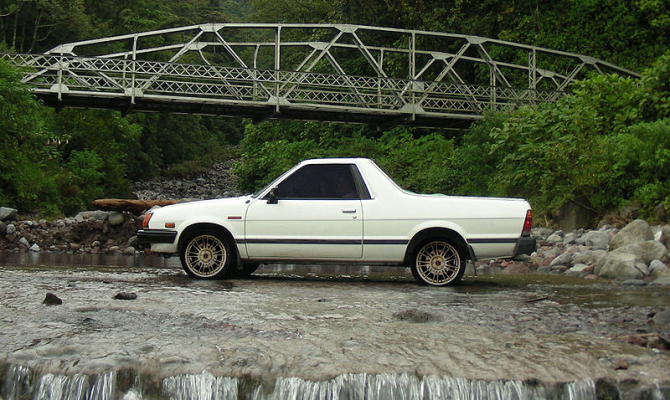
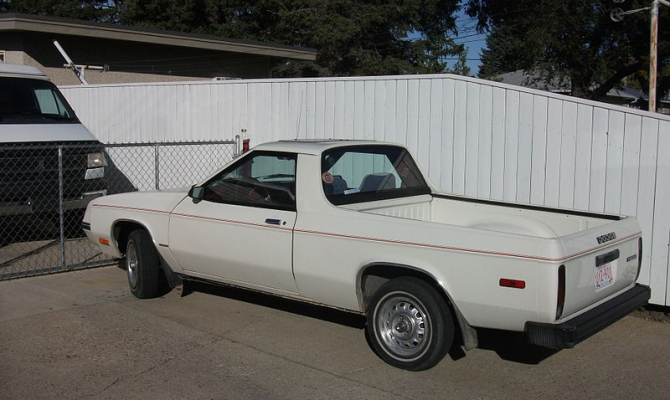
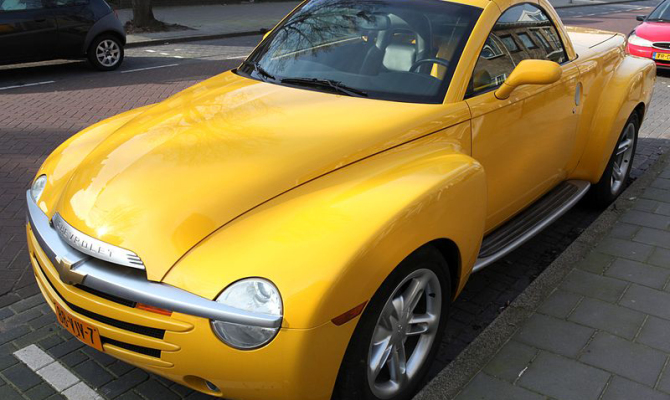
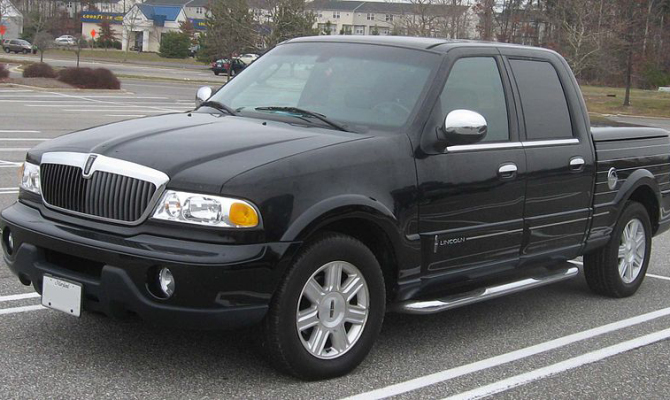
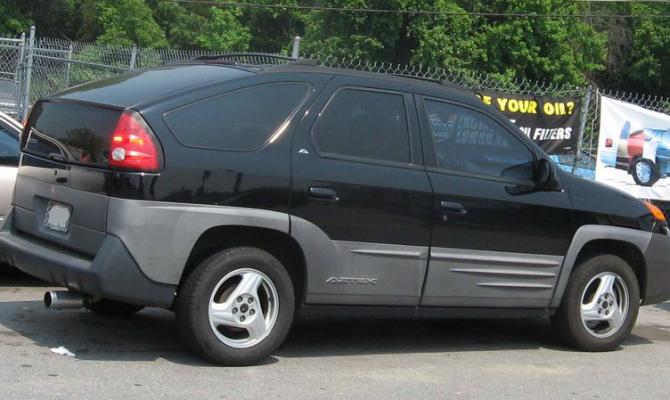
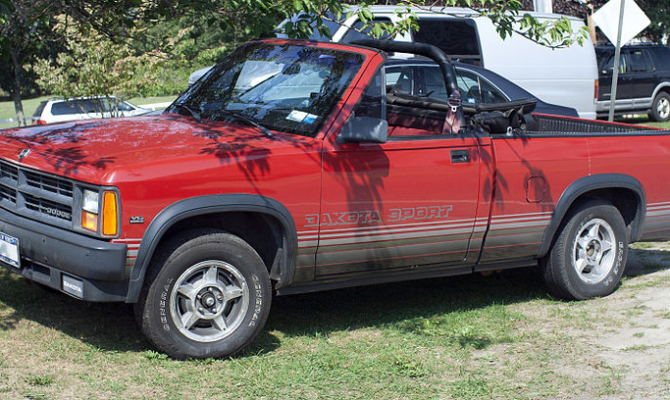
by Larry Pintz
Over the past two decades, America has become a land of truck drivers as SUVs, crossover SUVs, minivans and pickups have grown to account for the majority of light vehicle sales in the United States. In fact, the most popular vehicle in the world for more than three decades has been the Ford F-150, which, according to Morgan Stanley, accounts for 90 percent of Ford Motor Company’s global profits.
Given that kind of profit margin, and considering that in a typical year 16 million new vehicles are sold, there’s a huge incentive for auto manufacturers to try to introduce unique trucks in an effort to expand their existing model lines and fatten corporate treasuries.
For the most part, these efforts succeed. Neither a Cadillac Escalade nor a BMW X5 seem as strange as they did a decade ago. But here are other efforts that seemed like a sure bet but somehow missed the mark.
1978 Subaru Brat/2003 Subaru Baja
The product plan: Chevy was reaping fat profits with its rear-wheel-drive, midsize, car-based El Camino, as was Ford with the Ranchero. Subaru took the plunge with the four-wheel-drive Brat. The carmaker repeated their folly with the 2003 Baja.
So what happened? Brat stood for “Bi-drive Recreational All-terrain Transport.” Based on the company’s compact sedan platform, the Brat’s practicality was limited by two rear-facing seats mounted in the cargo bed, which offered little protection from weather or accidents. The Baja was a similar effort, minus the cargo bed seats.
1982 Dodge Rampage
The product plan: Like Subaru, Dodge eyed the fat profits made by Chevy and Ford with their car-based pickup trucks and designed the Rampage to fill the void. Unlike the Subaru, there were no chairs in the cargo bed.
So what happened? In light of the second Mideast oil embargo, Dodge converted their product line to front-wheel drive. So, the Rampage was built on a compact, front-wheel-drive car platform with four-cylinders. However, domestic buyers expected their trucks to have eight cylinders. Result? – This tiny truck’s name was a ruse.
1989 Dodge Dakota Convertible
The product plan: Since truck buyers increasingly use their vehicles as lifestyle accessories, why not offer the ultimate four-wheel fashion accessory, a convertible pickup?
So what happened? You have to admire then-Chrysler CEO Lee Iacocca and crew for offering something that had never been tried. Nevertheless, whether bought for image or utility, trucks have to look as is they’re ready to work. By contrast, droptops must look seductive. The Dakota offered neither.
2001 Pontiac Aztek
The product plan: Design a car-based crossover SUV with Pontiac design cues hung on a minivan platform to give the vehicle a sense of excitement while saving development costs. Then, name it after a dead civilization, but misspell the name.
So what happened? This is a car that made sense only inside the airless world of GM’s numerous corporate committees. That said, the Aztek has one interesting idea: the center console doubles as a removable cooler. Other ideas, such as the optional tent, were regrettable. And need we mention the styling?
2002 Lincoln Blackwood
The product plan: Casting a jealous eye at the success and profitability of the Cadillac Escalade, in reality little more than a leather-lined Chevrolet Tahoe, Lincoln did the same to its bestselling Ford F-150 pickup.
So what happened? At the time, Ford’s CEO, Jacques Nasser, didn’t fully understand the American market, which might explain why the cargo bed was lined with carpet. Even worse, the cargo bed cover was permanently attached; so it was better at hauling polo mallets than cargo pallets. Ford lost millions on this truck.
2004 Chevrolet SSR
The product plan: Chevy unleashed this convertible pickup concept truck at the height of Detroit’s obsession with retro styling. It elicited such a positive reaction at auto shows that Chevy chose to build it. Given Chevy’s lineup at the time, it’s no wonder.
So what happened? The old saw about those who do not learn from history being doomed to repeat it applies here. While the SSR looked better than the Dakota convertible, its miniscule 4-foot cargo bed rendered the truck useless. Toss in lots of chassis flex and a lofty $40,000-plus price tag, and its fate was assured.
Larry Pintz writes for Hagerty, the world’s leading specialist provider of classic car and boat insurance. Learn more at hagerty.ca.
“You can raise your truck a few inches or all the way up to nosebleed levels…”
Your new truck looks great in front of your home, but why does the front sit lower than the back?
If you find yourself pondering this question, you are not alone. This “feature” is very common with the trucks of today, but there is a solution to this problem.
Revtek Industries was founded in 2000 to market unique Toyota suspension lift systems, but since those early days, the company has gone on to develop systems for the Ford Super-duty truck, the Ford F150’s, Ram, Jeep, Nissan Titan and the Toyota Tundra.
Suspension upgrades and improvements are becoming tougher and tougher to manufacture. The days when you could throw away your stock leaf-springs and stick in the largest leaf-spring you could find are over. Now you have to worry more about steering geometry and wheel-alignment specs.
Revtek offers a complete line of suspension systems designed to level your vehicle, and offer you the option to increase tire size. Most levelling systems maintain the original springs, so you can maintain a smooth ride.
In my view, Revtek has the most installer-friendly kits available and the manufacturer utilizes the best materials – billet aircraft aluminum (higher grade of aluminum with no imperfections), powder coated cast aluminum, and specialty polyurethane, which meet or exceed original-equipment specifications.
Whether you choose a complete lift, or just to level the front end, Revtek likely has a solution for many of today’s most popular vehicles. Check out www.revtek.com.
If you are not happy with the overall ride height and not satisfied with just levelling the front-end then Pro Comp Suspension may be an alternative. It has a full line of suspension lifts: you can raise your truck a few inches or all the way up to nosebleed levels.
One kit in particular is the 8.5-inch for Ford Super Duty trucks. This lift has enough clearance to clear 37-inch tires, and will cost you $2,400 with shocks. With lift kits of this size, you should definitely make sure you make any necessary improvements such as a spacer kit to lower the carrier bearing on vehicles with two piece drive-shafts.
This will reduce high-speed driveshaft vibrations, and is well worth the investment of $60.
You should also consider a steering stabilizer to control those large tires bouncing down the road. There are a few options available from a single application or a double stabilizer setup, depending on the vehicle. Price $89 to $165.
Another good upgrade to consider with a lift of this size is a traction bar system to prevent wheel hop or axle wind up. In the old days, these bars would limit your wheel travel, but now the ends are equipped with reverse hourglass-shaped urethane bushings that allow the traction bar to flex for articulation.
The final upgrade to consider is the addition of stainless steel brake lines. Such brake lines not only give you the correct length required with these massive lifts, but also will not swell under increased braking pressure demanded by larger tires.
For more information check out www.explorerprocomp.com.
“With a good blade, you could get that driveway cleared during the commercial break and return to watching the game…”
We have had a beautiful summer but you just know we are going to pay for that as fall rolls into winter. (more…)
Recent Comments
- { Enjoyed your Forest of Bowland in the BMW X5M, particularly the photo of the BMW in front of the main part of Stonyhurst College where... }
- { Bantam designed the Jeep, not Willy's or Ford. The American military gave the original Bantam prototype to Willys and Ford to copy. There is plenty... }
- { All Escalades come with a 6.2-lilter V8 engine that produces 420 horsepower. A six-speed automatic is the only transmission offered and drives the rear wheels.... }
- { Alexandra is an excellent journalist. }
Popular Posts
- Journey to a ‘Sparkling’ Luxury Okanagan Resort “Four lucky readers will put a Dodge Journey’s weekend-...
- The Need For Speed: Hike Those Highway Limits More than half of those polled believe the province sho...
- Drives-U-Crazy… Erratic drivers. An early morning drive from Kelowna to Vancouver is nor...
- Readers Respond: The Pros and Cons of Increasing B.C. Speed Limits Increasing the speed limits will only increase risk to...
- Honda CR-V Review: The Compact Crossover To Get Things Done The CRV is a very stylish and aerodynamic crossover veh...


